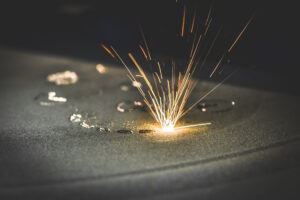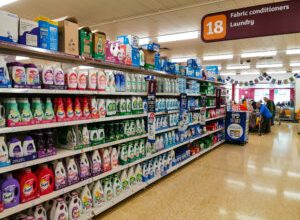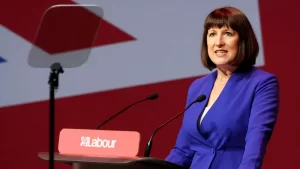Which Metal Additive Manufacturing Technology is Best for Your Company?

There are seven additive manufacturing technologies that can be inserted into your plant. In this article, we will compare two of the most efficient ones: DED and PBF.
To do so, we will look at each one separately, as we will bring up their advantages and disadvantages. Let’s hope that this will make it easier for you to choose the right one to acquire for your manufacturing site.
What Is Metal Additive Manufacturing Technology?
This technology enables manufacturers to create objects in any size and complexity, through metal 3D printing. It is based on information sent from a computer, which is then reproduced by metal additive manufacturing machines. The technology varies, but it usually implies putting together fine metal powder, one layer at a time, on top of each other, while using a bonding agent between them.
DED – Directed Energy Deposition
HOW DOES IT WORK?
DED is the process of material fusion, as it melts the metal, while it is being deposited. It uses powder or a wire on which it focusses powerful energy (most frequently a laser). The metal is coming out of a nozzle, which can move in any direction required, to create the piece it is working on. It works well to repair components or to add to them, but also to create something completely new. It can be compared to welding. However, the important difference is that DED additive manufacturing process can produce extremely fine details, which welding cannot.
There are three categories of Direct Energy Deposition, which are defined by the energy source that they use. They are: LENS (Laser Engineered Net Shaping), EBAM (Electron Beam Additive Manufacturing) and WAAM Wire Arc Additive Manufacturing.
THE ADVANTAGES OF DED
This is one of the most advantageous processes in terms of time and cost for each piece, as it works rapidly and doesn’t waste much material. It can also be used with a large variety of materials, which helps reduce costs, as well, according to the one you choose. It is often used when needed to work on large pieces and when angles are hard to reach. Finally, the result is dense and strong.
THE DISADVANTAGES OF DED
Acquiring the material can be costly at the start. The liquid melting pool, where the process takes place, doesn’t allow for overhang. Also, it may require post-processing, once the work is done, as the process resolution of DED is not optimal.
PBF – Powder Bed Fusion
When you use a PBF machine, you can selectively fuse regions of a powder bed, by using an energy tool to melt or to sinter powdered material. It works by creating a sheet of the material over the part. As it reaches the melting point, it is dispersed equally everywhere it needs to be, before the laser or the electron beam melts everything together. In the PBF process, there is an inert gas that is used, inside the near-vacuum chamber. This is meant to protect the object being worked on from oxidation and corrosion.
There are seven different types of powder bed fusion, based on the energy source used, which are: Selective Laser Sintering (SLS), MJF (by HP), Selective laser melting (SLM), Direct Metal Laser Sintering (DMLS), Electron Beam Melting (EBM), Selective Heat Sintering (SHS), High-speed sintering (HSS).
THE ADVANTAGES OF PBF
PBF is often compared to machining and casting, because of the mechanical properties of the metal parts. With this process, you can manufacture objects that are very complex, in terms of shapes. To do so, you can even use different materials on each piece. In the end, the parts that come out, are very strong. You don’t need a physical support to build, and numerous parts can be constructed, all at the same time. If you prefer, you can also choose to work with plastic or add the material to the metal construction, during the process. Finally, the powder that it uses is recyclable, most of the time.
THE DISADVANTAGES OF PBF
This is not the less expensive process in metal additive manufacturing technologies. That is because the printing time is rather long and you will often need post-processing as well, before the part is completed. In fact, the result will show different quality of textures on the surface. It also requires a lot of electricity to function. Finally, a potential thermal distortion can take place.
CONCLUSION
There is not one process better than the other. They are both great technologies that produce good, solid metal parts. The choice you have to make, depends on what you are manufacturing in your plant and what your priorities are. In both cases, you will be satisfied with the end results, and so will your clients.




